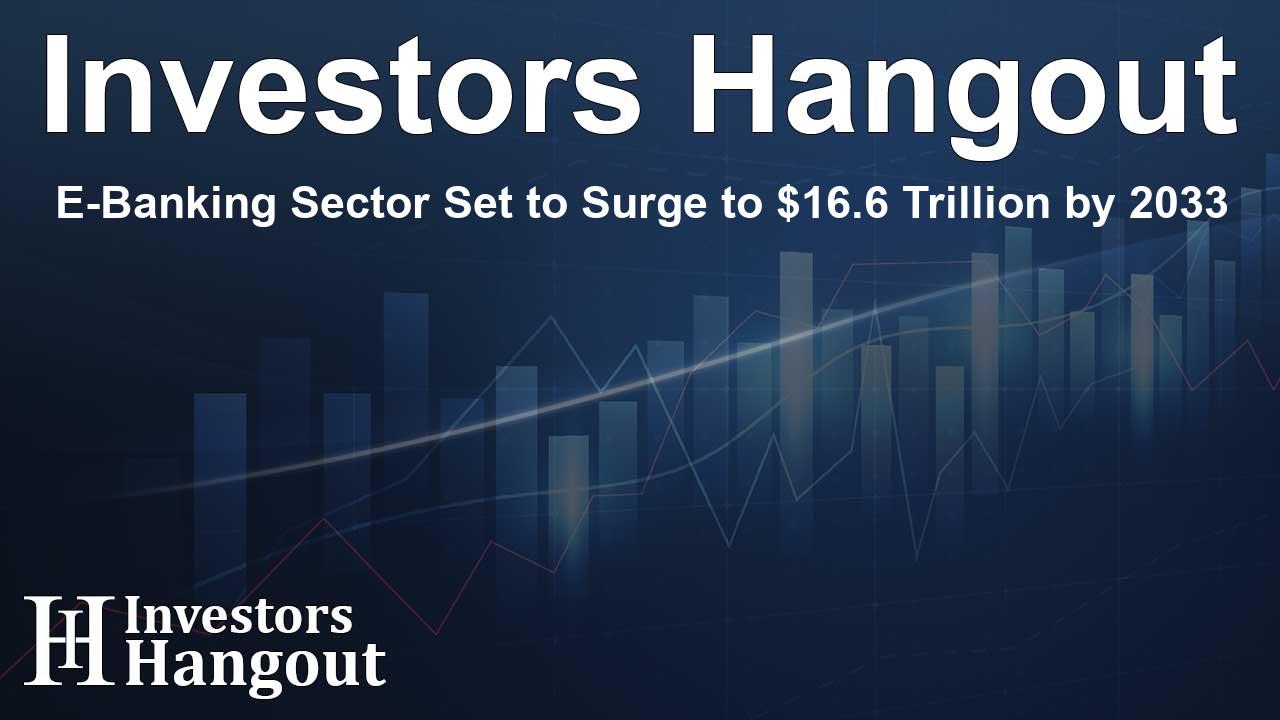E-Banking Sector Set to Surge to $16.6 Trillion by 2033

The E-Banking Market: A Forward Look into its Growth
The e-banking landscape is evolving rapidly, and recent insights reveal it was valued at $9.3 trillion in 2023. Forecasts predict remarkable growth, estimating the market will reach an impressive $16.6 trillion by 2033, fueled by a compound annual growth rate (CAGR) of 5.6% during the period from 2024 to 2033. This surge is indicative of how digital services are being embraced universally.
Factors Driving E-Banking Expansion
Several key drivers are propelling the growth of the e-banking sector. Among them, significant technological advancements and a wave of digital transformation worldwide are at the forefront. Furthermore, escalating internet access and smartphone utilization are making financial services more accessible than ever.
Increasing Internet and Smartphone Adoption
The proliferation of smartphones is a game changer for the e-banking industry. As more individuals gain access to the internet through their mobile devices, the demand for online banking services grows. We see a trend where consumers prefer the convenience of managing their finances from anywhere.
Growing E-Commerce Influence
Another critical element influencing this industry is the explosive growth of e-commerce. As more consumers engage in online shopping, the reliance on digital payment solutions increases. This transition towards cashless payments reflects a broader shift in consumer behavior, where speed and security are paramount.
Challenges Facing E-Banking
While there is much potential for growth, the sector is not without its challenges. Concerns regarding device compatibility and security issues are significant barriers that could slow market advancement. Additionally, privacy concerns remain at the forefront of discussions regarding the future of e-banking.
Market Segments and Innovations
Within the e-banking market, various segments show promise. The digital payment sector is projected to expand rapidly, overtaking traditional banking methods. By service type, online banking continues to dominate. It offers essential features such as account management and bill payments, which are vital to users.
Emerging Digital Payment Trends
The rise of mobile wallets and contactless payment systems indicates a significant shift in consumer preferences. Users are gravitating towards platforms that provide rapid, hassle-free transactions. This trend is expected to accelerate as consumers become more accustomed to digital finance.
Processing Services on the Rise
Processing services are also gaining traction as businesses and banks seek automated solutions for managing transactions efficiently. As the demand for fast and reliable processing increases, businesses are investing in advanced technologies to meet these market needs.
Regional Analysis of Market Growth
Northern markets like North America currently boast the largest revenue share, owing to a robust financial infrastructure and high digital adoption levels. However, the Asia-Pacific region is projected to exhibit the fastest growth due to rising awareness and increased usage of online banking services.
Players Reshaping the Market
Key players are significantly impacting market dynamics. Institutions like JPMorgan Chase, Bank of America, and HSBC are employing various strategies, including collaborations and product innovations, to maintain competitive advantages.
Recent Developments in E-Banking
As the industry continues to evolve, recent partnerships and technological advancements signal a commitment to enhancing customer experience. Notable collaborations, such as that between Infosys and Danske Bank, aim to drive digital transformations that cater to modern banking needs.
Key Insights for Stakeholders
The e-banking sector is poised for significant growth, providing exciting opportunities for stakeholders. Companies can leverage insightful market analysis to enhance decision-making. Key trends, market drivers, and regional insights will be crucial for those wishing to invest in this burgeoning space.
Frequently Asked Questions
What is the projected value of the e-banking market by 2033?
The e-banking market is projected to reach $16.6 trillion by 2033.
What drives the growth of the e-banking industry?
Key drivers include technological advancements, increased internet penetration, and a shift towards digital payment solutions.
What are some challenges faced by the e-banking sector?
Challenges include security issues, device compatibility concerns, and privacy worries.
How does the Asia-Pacific region factor into e-banking growth?
The Asia-Pacific region is expected to experience the fastest growth in the e-banking market due to rising digital use.
Who are the key players in the e-banking market?
Major players include JPMorgan Chase, Bank of America, HSBC, and others who are leading through innovation and strategic partnerships.
About The Author
Contact Logan Wright privately here. Or send an email with ATTN: Logan Wright as the subject to contact@investorshangout.com.
About Investors Hangout
Investors Hangout is a leading online stock forum for financial discussion and learning, offering a wide range of free tools and resources. It draws in traders of all levels, who exchange market knowledge, investigate trading tactics, and keep an eye on industry developments in real time. Featuring financial articles, stock message boards, quotes, charts, company profiles, and live news updates. Through cooperative learning and a wealth of informational resources, it helps users from novices creating their first portfolios to experts honing their techniques. Join Investors Hangout today: https://investorshangout.com/
The content of this article is based on factual, publicly available information and does not represent legal, financial, or investment advice. Investors Hangout does not offer financial advice, and the author is not a licensed financial advisor. Consult a qualified advisor before making any financial or investment decisions based on this article. This article should not be considered advice to purchase, sell, or hold any securities or other investments. If any of the material provided here is inaccurate, please contact us for corrections.
